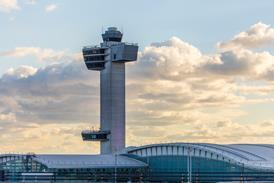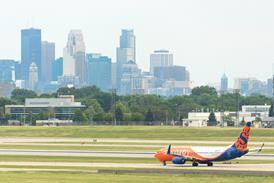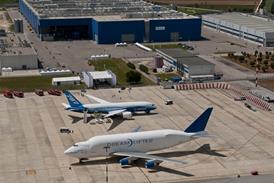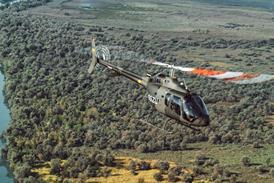As any frustrated mobile phone user who has struggled for a decent connection will attest, 5G (fifth generation) technology for cellular networks promises huge benefits to society, thanks to download speeds almost 200 times faster than 4G. The rapid roll-out of 5G in the USA in recent years has seen tens of thousands of new masts sprout up in cities across the country.
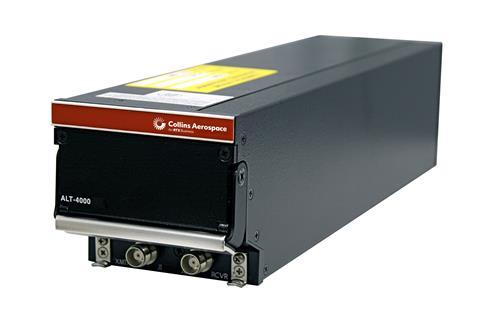
This creates a potential problem for aviation, particularly when masts are close to airports. Interference from 5G networks can ‘confuse’ low-range radar altimeters – crucial pieces of avionics that let pilots know their precise altitude, particularly during final approach. They do this by ‘bouncing’ signals off the ground or other obstacles such as trees or buildings.
Since radar altimeters began to be deployed on commercial aircraft in the 1970s, they have used the internationally recognized 4.2-4.4 GHz band. However, when 5G emerged in 2019, the Federal Communications Commission began allocating a portion of the adjacent 3.7-4.2 GHz band to telecoms firms. This introduced the possibility of harmful radio frequency interference.
While the current telecoms take-up in the C-band frequency might be considered manageable for now, the likely ramp-up in use presents more of a challenge. Up to 19 more telecoms providers could be allocated slots between now and 2028, with the resulting congestion adding to the likelihood of radar altimeter interference during critical stages of flight.
Radar altimeters are typically highly accurate, so the ramifications of a wrong reading at a critical flight phase barely need to be spelled out – especially when there is an absence of other cues for pilots, such as in bad weather. Other safety-related on-board sensors such as the terrain avoidance and warning system (TAWS) also rely on the radar altimeter.
Other vital safety features that can be affected by erroneous readings from a radar altimeter include the auto spoilers and thrust reversers. These drag devices tend to deploy automatically on landing, having used a steadily descending altimeter to validate the signal from the weight-on-wheels sensor.
The reason the auto spoilers and thrust reversers do not rely solely on the weight-on-wheels switch is to prevent them activating during flight if that sensor fails. However, if the radar altimeter is also giving incorrect information, that could cause the aircraft to interpret the correct weight-on-wheels signal as invalid.
For operators, one solution might be to simply avoid airports where there might be the risk of interference from a 5G mast. Another option, fortunately, is less disruptive. Manufacturers of radar altimeters, such as industry leader RTX company Collins Aerospace, can deploy a quick and easy solution that blocks any signal that potentially interferes with the altimeter’s function.

The Federal Aviation Administration has since 1 February required passenger and cargo airlines – known as Part 121 carriers – to replace or update altimeters to operate safely near 5G wireless signals. Collins spent much of 2023 working at “breakneck speed” to ensure its commercial customers are compliant, says Marc Ayala, senior director business and regional avionics sales.
On the business aviation side, the situation is different. Although the FAA has noted the risk for Part 91 or Part 135 operators, it has stopped short of mandating the fix as it has for their commercial counterparts. Because of this, most business aircraft owners or flight departments have not yet chosen to adapt their radar altimeters.
This is something Collins is keen to change with a two-part appeal to the business aviation community. Collins is reminding operators of the importance to safety of a piece of avionics that is “often taken for granted”, as well as stressing the ease of updating the radar altimeter during a routine hangar visit. “The paperwork takes longer than the actual replacement,” says Ayala.
Collins’ ALT 4000 is the most widely used radar altimeter in business aircraft. The altimeter’s successor, the ALT 4000+, comes with an internal filter that rejects energy from an adjacent band such as 5G signals, and Collins is offering to install it as a part-exchange with existing equipment or as part of a service bulletin upgrade.
Following regulatory approval of the ALT 4000+ in the middle of last year, Collins now has in place a series of STCs [supplemental type certificates] covering a wide range of business aircraft types that allow for a ‘plug-and-play’ replacement of the legacy equipment in a matter of hours.
While Collins’s solution is aimed at the USA, the company is also considering its offer in other markets where 5G networks are being rolled out. Needs are likely to be different, however, if governments allocate different bands to 5G operators or simply because mast designs differ. In Europe, for instance, antennas tend to be angled to the ground so there is less interference risk.
One challenge Collins does face in the USA is complacency about the 5G hazard. “People will say ‘I’ve got 5G service on my phone and I’ve never had an issue,” Ayala notes. “It’s nothing to do with the cellphone in your pocket. It’s interference from the transmitter on the ground that we’re concerned about.”
Likewise, Ayala is keen to stress that the villain is not 5G itself. “At RTX we are embracing 5G for any manner of applications,” he says. “This is a very specific problem around transmitters. It is not a problem to have other 5G products in your cockpit.”

